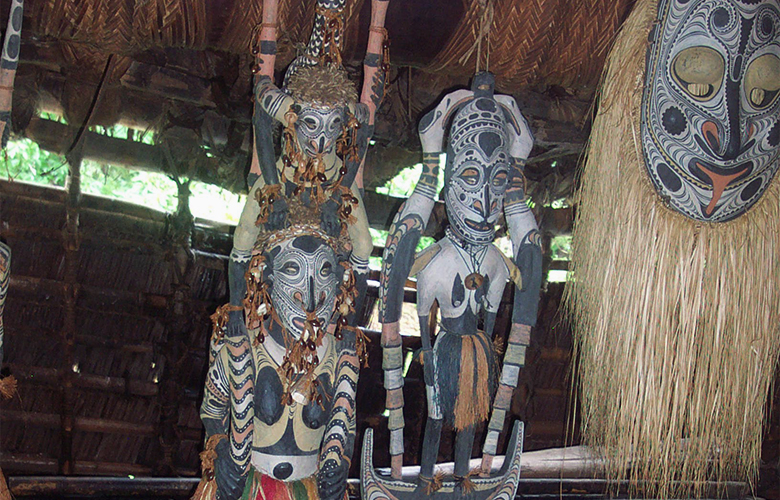
Where to see Papuan artefacts!
The arts of Papua New Guinea are the embodiment of Theatre, Art and Life. The dancing, painting, sculpting and weaving are all an essential part of life for these creative people. Canoeing down the Sepik River in PNG fifteen years ago and meeting the villagers was an inspiring experience. At that time, there was no other way to travel along this wild ribbon that weaves through the middle of the world’s third largest island. Now, you can take a small cruise boat up the Sepik.
The interest in PNG arts has grown dramatically, and no wonder. The more complex, electronic and un-wild our world becomes, the greater the appeal of the opposing world. We like the boldness of the sculptures, the wild designs on the spirit boards and the fierce expressions on the masks. We love that each artefact has significance to the creator, representing the heritage of millennia, identifying a specific tribe and place. As we get more tame we want more raw wildness, and we are willing to pay for it.
Papuans have been selling their arts since the 1850s, and are both creators and businesspeople. They have a very pragmatic approach to the objects they chisel, paint and sculpt. The money the creators earn from selling their art is the sole income in many remote villages, usually paying for school fees and medical care.
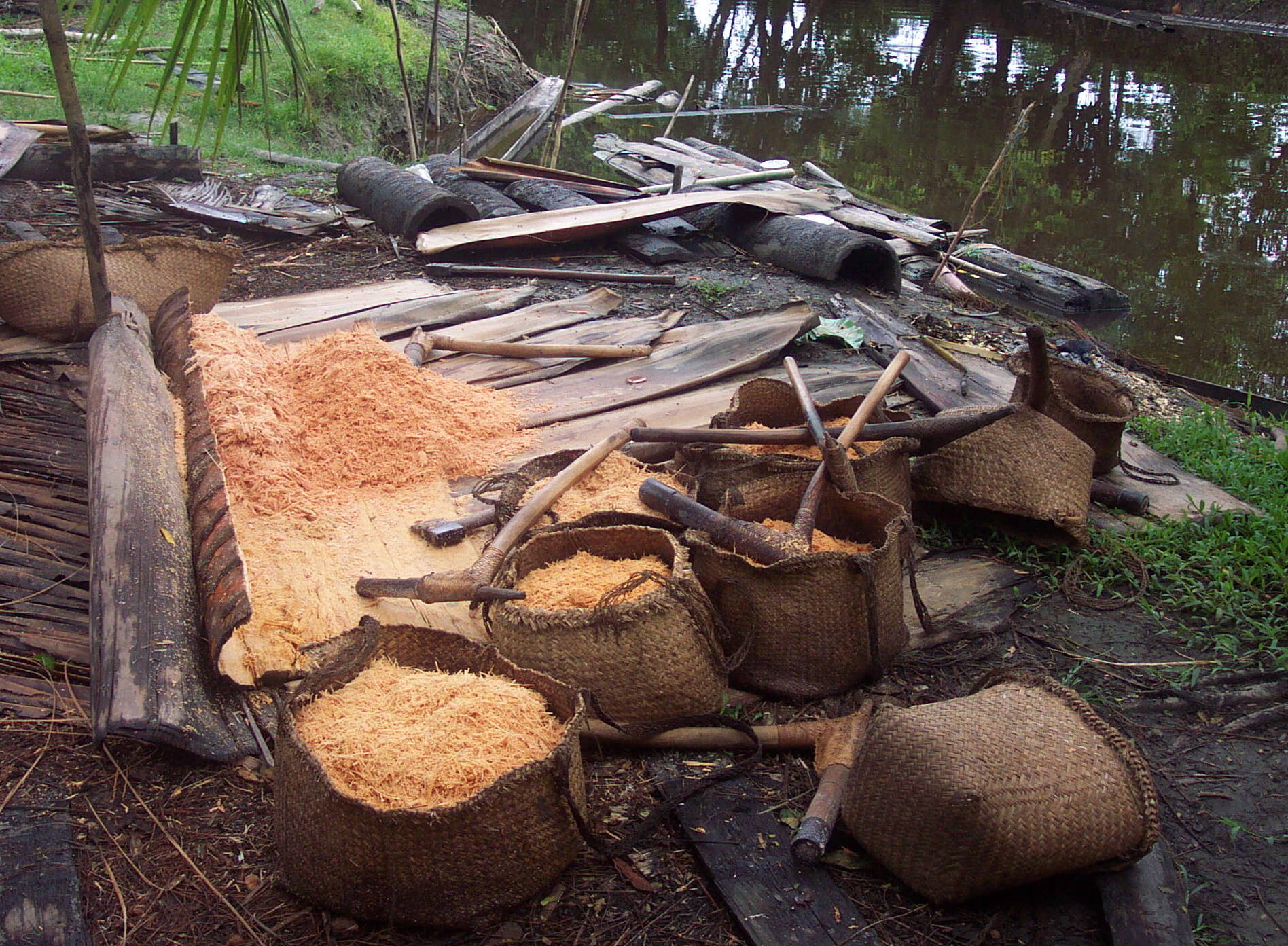
There are basically five categories of PNG artefacts. First, contemporary PNG art, often painted in bright colours with modern paints, on newly made shields or canvases. The best-known contemporary PNG artists include Mathias Kauage and his son Andrew, Timothy Akis and many others.
There is, as ever, airport art. There may be some well-crafted pieces but they have little connection to a specific village. It is commercial art, decried by purists and bought mostly by tourists. But if a Papuan can earn some money making airport art, why not? As long as the buyer knows it is not traditional and the craftsperson gets a good chunk of the sales fee, airport art is a legitimate trade.
The next category is traditionally made artefacts for the art market. They are made with traditional materials (no acrylic paint) in the traditional way (no electric drills) and can be used for a traditional cultural purposes. These masks, drums, head dresses, spirit boards, story boards and other items may have been made yesterday but they are crafted following the cultural guidelines. They may or may not have been actually used in a ceremony, but they are made in such a way that they could be.
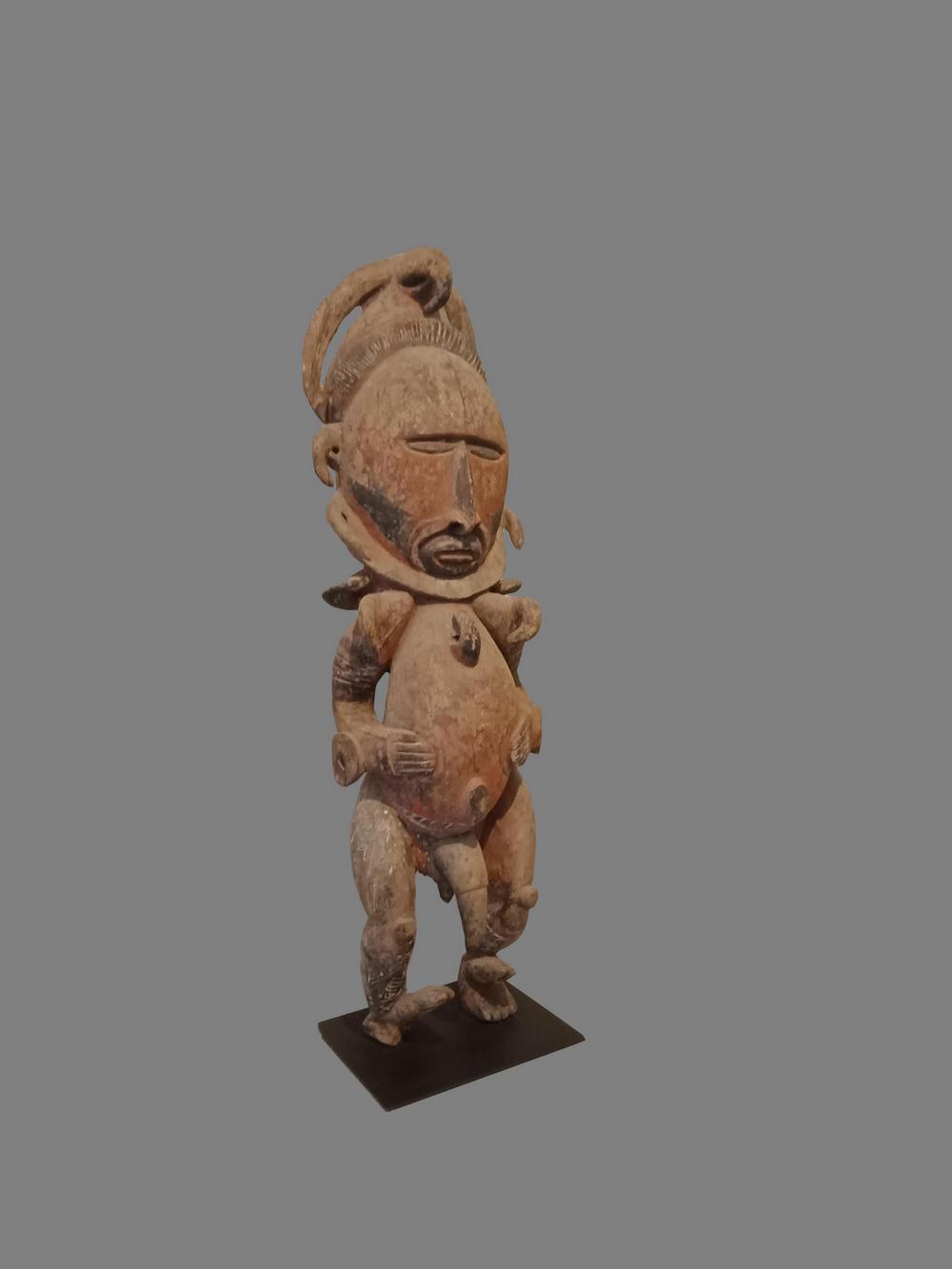
The fourth category is the very old and rare pieces acquired (often stolen) from 1850 to 1930. These artefacts were most definitely used for ceremonies, initiations, protection from evils, as a bride price, and for many other cultural reasons. Trader Warren Campbell explains that “Rarity comes about by provenance, age and quality. The more illustrious the collector, the better the provenance and the higher the price.” These are the artefacts sold through the prestigious auction houses and by private collectors to public galleries, museums, university collections and wealthy private individuals.
Or they may not be, because there is the fifth category, the fakes and misrepresented pieces. It is a buyer-beware market. Australian trader Richard Aldridge says one way of knowing if a mask is the genuine or airport art is if it is pretty. The intent of the mask is to protect the village from a sorcerer or from the tribe on the other side of the mountain. Pretty just doesn’t scare off a demon or an enemy. Richard explains that most spirit boards were decorated to confuse outsiders. These are two-dimensional carved figures coloured with pigments in swirls and angled face features. “If it’s not a confusing design, it might not be genuine.”
Many objects are made in Bali where acid is sprayed over them to make them look old. In PNG villages, old objects would be stacked together and stored in caves or shelters. They weather unevenly, not all around. Anything perfectly ‘aged’ is likely to not be old.
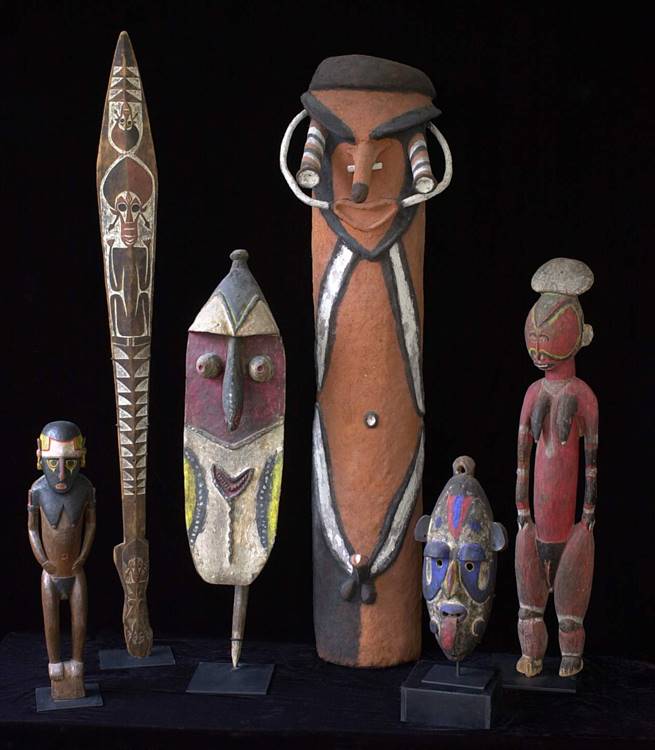
All traders must have a license from the regional museum or the Port Moresby Museum. The trader then buys pieces from the village and gets a permit to export each individual piece. If coming to Australia, every item is fumigated, sometimes gamma radiated and often put in quarantine. If a piece is going to be forwarded on to an exhibition in Paris, New York or elsewhere from Australia, it doesn’t have to be fumigated a second time because the world knows Australia has a rigorous biosecurity border control. No wood worm gets pas us!
French traders usually transport their pieces to French Polynesian resort towns to sell to tourists. In West Papua, Indonesian traders get permits from the Jayapura Museum. They usually take pieces to Bali, Indonesia, to sell to tourists in that holiday isle.
Collecting in New Guinea is nothing like what most people imagine. Trader Warren Campbell explains: “It’s not like western culture where things run smoothly, usually to time, under elements of order and structure. In New Guinea, you just need to go with the flow and keep your wits about you. The hired car or carved wooden dugout canoe may come or it may not arrive; your hired help may show up or they may not. Everything is negotiable. Almost everything has a price (even taking a picture) and Papuans are some of the most skilled negotiators in the world. They know exactly what a person’s needs are, and how to get the most out of them. Often a price is lowered as a strategy (to twist my arm to buy more), knowing full well I will then require a second dugout canoe to assist in shipping the pieces back down the Sepik River. Coincidentally, the second boat and crew are negotiated at 10 to 20 times higher than the cost of the original canoe. After lots of rigorous discussion we come to an agreement beneficial to both parties. There are no hard feelings in these exchanges. It’s all part of the magical dance in PNG. Intense negotiation is just part of the culture and something you get used to over time. When negotiating with the tribes, they will often walk away and return hours later (after significant deliberation), or frantically wave their arms around in acts of frustration. They might talk loudly signifying to the whole tribe to ready itself for warfare. Weapons can be displayed to evoke power (bows, arrows, daggers) but know this, it is all part of the delicate dance in PNG. It’s all very strategic, part of their culture and very, very smart. I have come to love the dance as much as I love the people and the pieces. It is truly another world.”
Warren continues “We are committed to supporting the people and traditional cultural practices. We know there is a market for both older tribal works as well as traditionally made, contemporary pieces that are original works of art using sustainable practices as they have for hundreds of years.
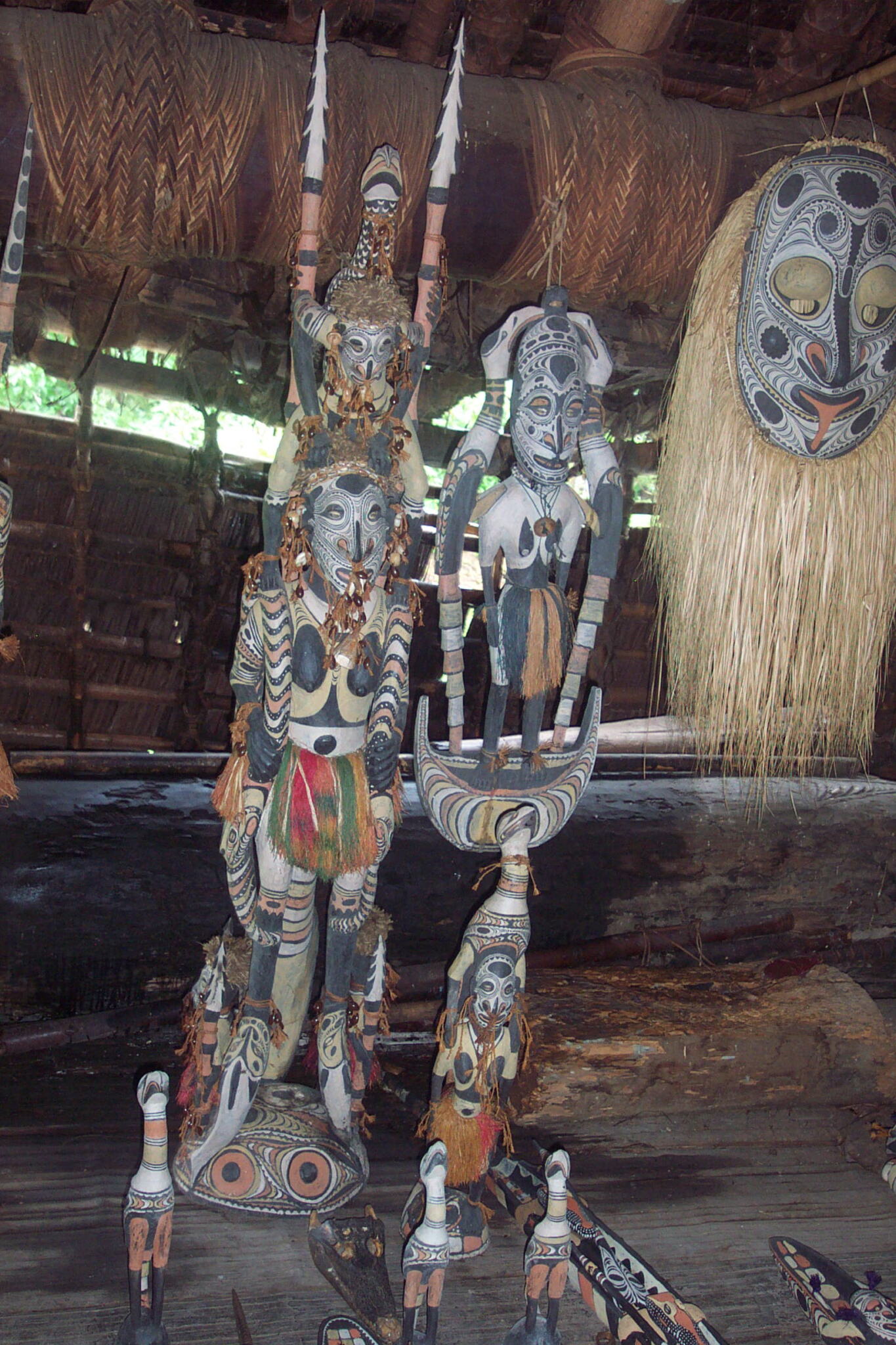
“High quality modern pieces are sought after and valued for their spirituality and celebration of a continuous, living culture. The pieces speak for themselves as unique and varied artworks imbued with the magic of centuries old belief systems. The belief or myth and magic behind each piece still exists for carvers. The master carvers of PNG still practice their trade in carving traditional pieces for ceremonies and celebrations, however Western influences over the years has had an impact. Pieces like walking sticks are not traditional carvings. Some carvings were influenced by Westerners coming off boats, whereby carvers saw an opportunity in what Westerners were using. Therefore, carvers started carving specifically to appeal to the Western markets. So I think that if they can’t sell items to Westerners, it will change the subject matter to pieces that have more meaning to locals and their own culture. We must remember that trade amongst tribes is part of their culture, as was finding what appealed to those who traded with them. Culture is a living thing, and will respond to the influences of world events. One friend of ours was trying to get his tribe in New Ireland to stop greeting him with a traditional ceremony, to ‘modernise’ them. I hope they succeed in modernising him, by showing him the value of traditional ceremony in the 21st Century.
Here are some of the current Australian traders.
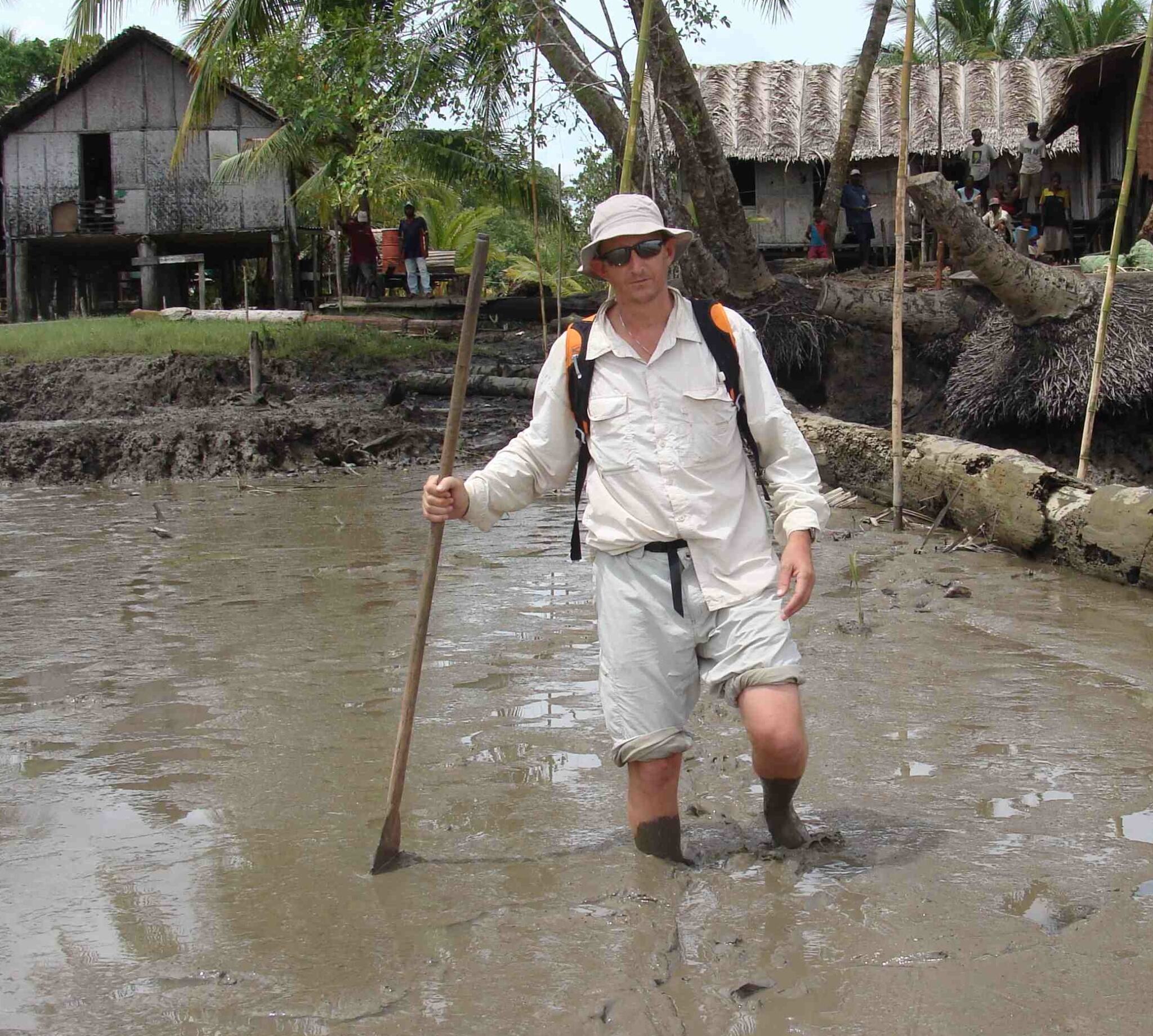
West Australian Richard Aldridge became interested in PNG people and artefacts while working the Highlands as a geologist. He has seventeen years of experience collecting and trading artefacts. He usually travelled alone with a local guard, occasionally with armed police. He speaks Pidgin fluently. His collection are pieces that were made in the traditional way, used in the traditional manner and represent the true culture of village life.
Todd owns Oceanic Arts Australia, currently Sydney’s only Oceanic Art Gallery. “I have been running a gallery in Sydney since 1988 and field collected extensively in West Papua. My artworks are in the National Gallery of Australia, the South Australian Museum, the Australian Museum, the Musee du Quai Branly in Paris. When you enter the Oceanic Art Pavilion the first artworks you see are monumental Ancestor Poles from the Asmat and Mimika regions along with their Shields, Dance costumes.”
Alex buys and sells pieces in the high end of the market from museums, auction houses and private collectors. “I have collected tribal art for about 45 years and love New Guinean art. I run a gallery here in Melbourne, open by appointment. I do not source any art from PNG but instead look around the world for early collections and pieces that come on the market or that come up for auction. I only have items that pre date 1940s.”
Australian Warren Campbell operates Bubble Artefacts from Coolum Beach in Queensland. “I have been drawn to the Oceanic Arts for over 15 years, mainly collecting prior to selling. I started with a mask in which I had no idea as to what country it was from or the meaning behind the piece. I was purely struck by the beauty of its form in which I wanted to understand more. I started reading more about the culture, the people, the history and along the way found out the piece I had was a mask from the Boiken area. From that moment on, my passion for the ‘myth and magic’ of their stories, the art has lead me on many fascinating journeys chasing this obsessive passion to understand more about the tribes of New Guinea.”
Australian Chris Boylan’s parents worked in PNG and he has been returning there regularly since the 1970s. Chris has exhibited in Paris, London, Philadelphia, San Francisco and London and elsewhere. He recently organised an exhibition of contemporary Phantom Shields of the New Guinea Highlands at the Michael Reid Gallery in Sydney. “The Phantom Comics became hugely popular throughout PNG and the sign painters began appropriating the Phantom by putting him on shields. They’ve stirred quite a lot of interest among collectors and Museums. around the world. Most world class museums would have a Phantom shield.” They aren’t used as shields. It’s contemporary art that’s fun, tells a story and had deep cultural importance to the creators.
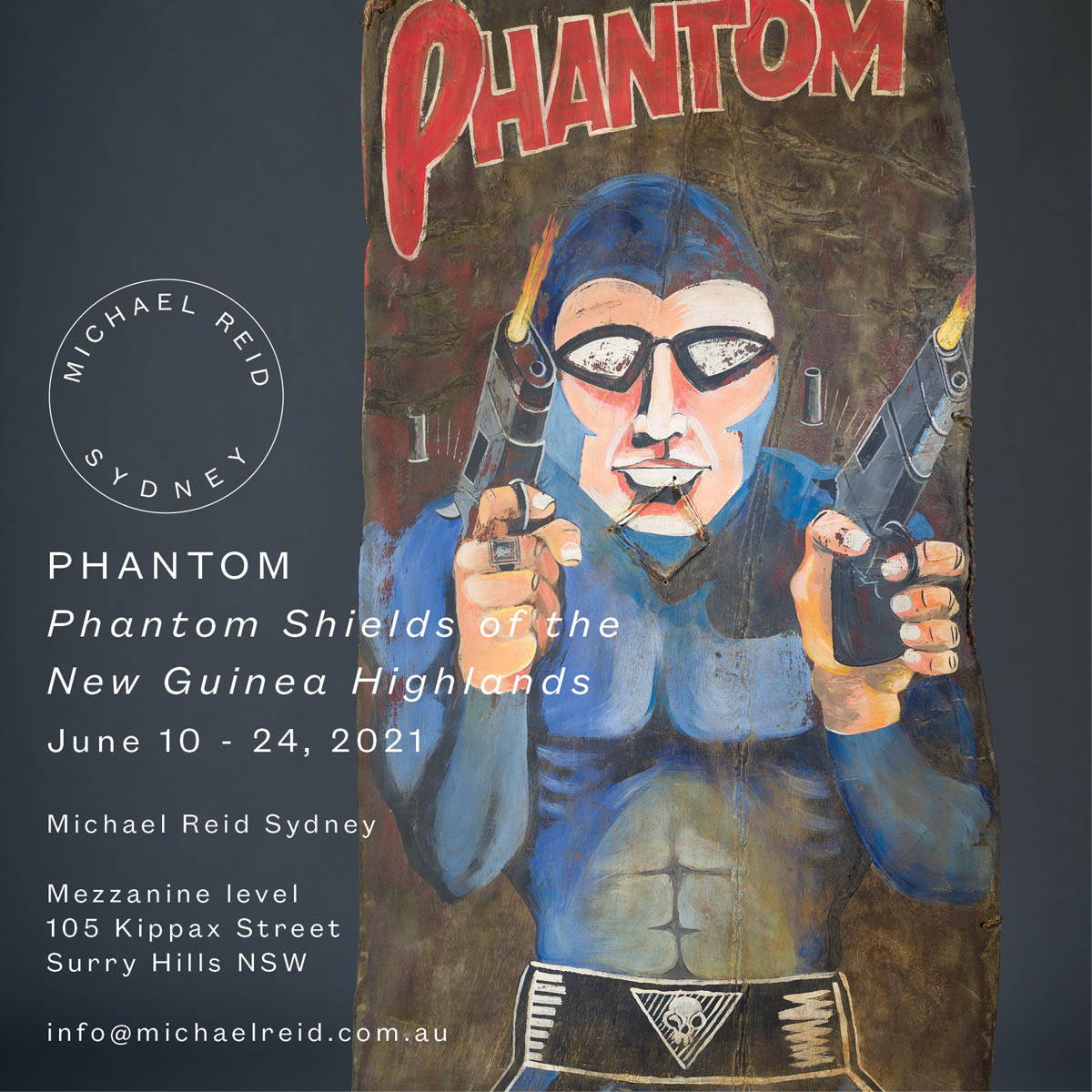
The Phantom comics were published daily in the newspapers and many learned to read from them. There was a fascination with The Phantom resulting on painting the image on shields used in battle. That then morphed to painting shields for the joy of it and as contemporary art. This is one of the many clips about Phantom shields.
Now that touring the rivers, coastline and highlands is easier and safer, more people from around the world take organised tours to buy from villagers directly. Meeting the creators ensures that the tourist will value the piece far more than if had been bought online or at auction. The heroic effort of getting to the remote location heightens the personal appreciation of the piece.
And, the pool of collectors buying and selling has also grown due to younger people getting involved, aided by apps and online auctions.
Significant private collections are in France, England, America, Australia, Japan, and increasingly China. In Australia, here are probably a dozen people who have over a hundred pieces, and three or four who have thousands.
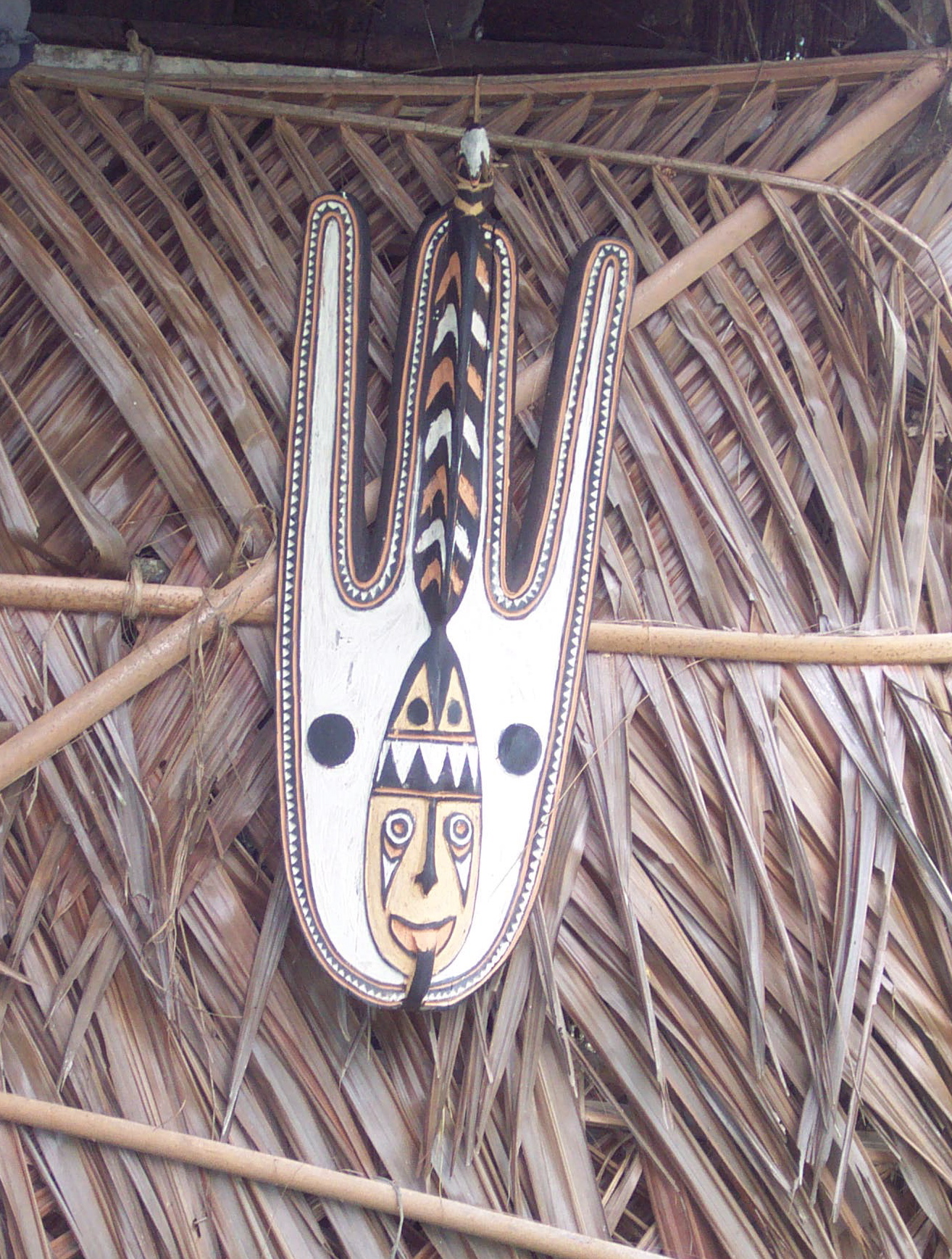
Sir David Attenborough is probably the best-known collector of PNG artefacts. Every time his collection is mentioned in the media, there is a burst of interest, and more people discover PNG creations.
Some collect to sell in the market for a profit. Others collect simply to be surrounded by the expressiveness and beauty of the objects. Others collect to help the PNG people. The money that comes from selling artefacts is an important source of income. As Warren Campbell says, “It’s people like me that are helping keep these traditional arts alive. I can help reach a broad market not easily accessed by villages that don’t have reliable services and utilities like the Western world. I can market these pieces to potential buyers. It’s a win, win.”
Pre-WW1, the western half of the island was in Dutch control. The vast northeastern quarter was German. In 1883 the state of Queensland annexed the southeastern quarter of the island fearing Germany was about to colonise the rest of eastern half of the island. At the end of WW1, the League of Nations gave control of the entire eastern half to Australia. PNG gained its independence in 1975.
Almost every significant cultural institution in the world has PNG artefacts.
Public institutions have a delicate balance to maintain. Should artefacts taken by early explorers be returned? Are more people going to see the artefacts if they are in a western museum than if they were in a museum in Papua New Guinea? Are works going to be protected better in a modern air-conditioned building than in an under resourced facility? Since PNG independence in 1975, Australia has returned about 4,000 pieces to the country’s National Museum.
Queensland, our northern state, is 125 kilometres from PNG and has for decades displayed the country’s arts in extensive exhibitions, such as the Queensland Art Gallery’s 2016 ‘No.1 Neighbour, Art in Papua New Guinea 1966-2016’.
The Australian Museum in Sydney has a small display of PNG artefacts is a part of the permanent Pacific Spirit gallery. The Museum plans to expand significantly the exhibition of PNG pieces in a much larger gallery. In 2016 the Museum’s Yvonne Carrillo-Huffman travelled to the Eastern Highlands to work with members of Komunive village resulting in a sharing of knowledge and resources that continues to this day. Following that visit the Museum brought several Konumive mask makers to the museum to deliver a series of performances and workshops.
The National Museum of PNG in Port Moresby has superb pieces from twenty-two regions of the country and considerable display of contemporary art.
Massim Museum & Cultural Centre is a not-for-profit museum and cultural centre dedicated to the culture of Milne Bay Province. The exhibits include striking wood carvings, canoe art, basket weaving, contemporary art, community photography and more, much of it donated by locals.
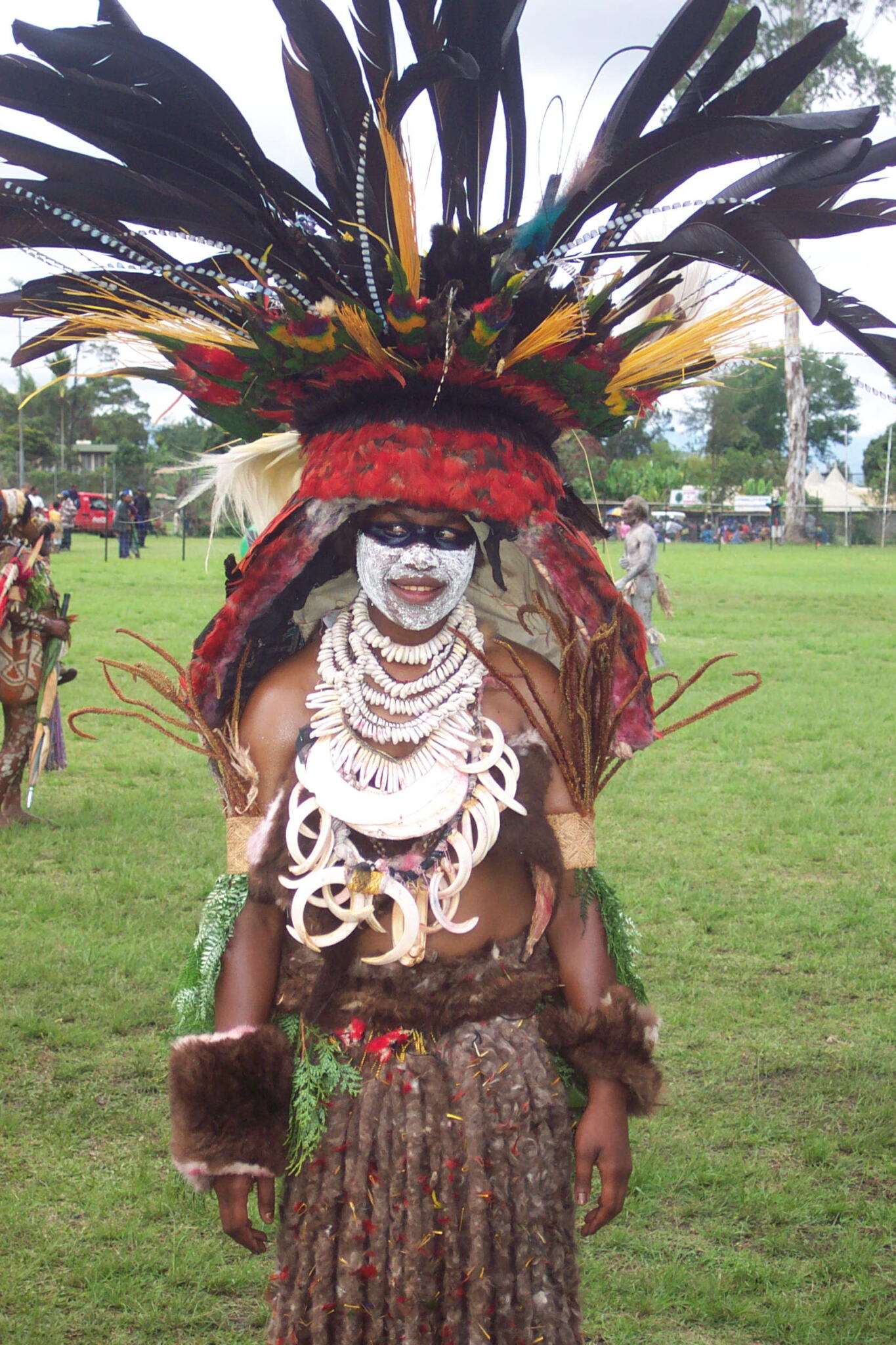
The American Museum of Asmat Art in Minnesota exhibits the art and culture of the Asmat people of southwestern Papua, Indonesia. Featuring more than 2,200 objects, it is one of the largest of its kind in the United States. Asmat art is widely collected in major Western museums despite the difficulty in visiting the remote region because it is exceptionally expressive art. The museum was founded by Bishop Alphonse Sowada, a Minnesota native who worked with the Asmat people.
Oceanic Art in The Michael C. Rockefeller Wing of the Metropolitan Museum of Art in New York may have the most extensive collection of pieces from the Asmat region. Michael Rockefeller (of the famous Rockefellers) is presumed to have died there in 1961 while collecting. There have been numerous books and documentaries about the mysterious circumstances of his demise.
The arts, artefacts, stories, regional distinctions and all the other fascinating things about the island of Papua have been a fascination for over a hundred years. Thankfully, there are hundreds of video clips available now for anyone interested in knowing more. Enjoy.
Does Size Really Matter? Yam ceremonies in Papua New Guinea
Cannibal Tours – 1988 – Dennis O’Rourke
Living Art in Papua New Guinea – Screener
First Contact – The Day the Plane Came
Moka: Papua New Guinea’s Most Selfless Ceremony
Bis Poles at The Metropolitan Museum of Art
Tapa cloth(1) Variety and History of tapa
Behind the Scenes—Guardians of the River
Saving Papua New Guineas rainforests
Cannibal Warriors | Tribes & Ethnic Groups
Green Heaven – West Papua trip to Dani and Korowai
Cricket As A Conflict Resolution Ritual in Papua New Guinea
Australian Artists Battle the Fossil Bullies: The Simple Signs Send the Message!
Monet and Friends: A Digitised Theme Park of Art


Carol is a Sydney playwright, producer and artist. She has had four full-length plays and 14 short plays produced (Sydney, Malaysia, India). Her published plays are at australianplays.org. Reviews of her latest play are at www.kissofthegalleryguard.net.au/reviews. Her artwork is at www.paintingsbycaroldance.com
Read Full Profile© 2021 TheatreArtLife. All rights reserved.

Thank you so much for reading, but you have now reached your free article limit for this month.
Our contributors are currently writing more articles for you to enjoy.
To keep reading, all you have to do is become a subscriber and then you can read unlimited articles anytime.
Your investment will help us continue to ignite connections across the globe in live entertainment and build this community for industry professionals.